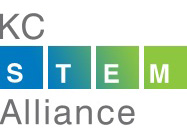10 Dec Hour of Code initiative introduces kids to the skills, thrills of computer programming
As long as the projection of more than 1.4 million computing jobs by 2020 dwarfs the projected number of computer science students in America, the voices behind the Hour of Code are going to keep this up.
They’re going to rally schools as they’re doing this week across Missouri and Kansas and the nation and the world to the joy of prodding a computer program into action. Even if it’s tricky.
“Ooh, I can’t do this,” 7-year-old Isabella White says.
But this is the perfect setup.
She’s a second-grade girl from Crossroads Academy charter school, matched up with 13-year-old Sam Keeney of Kansas City Public Schools’ Foreign Language Academy.
Such pairings filled a room Tuesday at Google Fiber Space on Westport Road. As part of the annual Hour of Code international event, the KC STEM Alliance set students to play with a coding game that allows them to program the Disney character Elsa from “Frozen” to skate out snowflake patterns on ice.
While Isabella chews on her lower lip, Sam tells her “the thing about programming: If you mess up, you edit it and retry it.”
He talks her through it. She plugs in some new numbers. She clicks the mouse pad.
You’d think from Isabella’s face that Elsa had come alive and scattered ice flowers in her lap.
“It did it!”
So far this week, more than 60 million people throughout the world have taken part in an Hour of Code, according to Code.org.
Around a thousand schools and clubs have activities planned in Missouri and Kansas alone.
In promotional videos, the students gathered in Google Fiber Space heard from a host of national shakers and celebrities, starting with President Barack Obama: “Don’t just buy a video game. Make one.”
And finishing with music star will.i.am: “Great coders are today’s rock stars…”
The schools and the tech industry champions keep shouting the message because the U.S. Bureau of Labor Statistics projects only 400,000 computer science students are preparing to meet the demand of those 1.4 million computing jobs by 2020.
At the state level, according to Code.org, Missouri is graduating about 1,170 computer science students to fill more than 10,000 computing jobs open now, and Kansas is graduating 425 computer science students to fill some 4,000 jobs.
And nationally, only 15 percent of the computer science graduates are women, and only 8 percent are Hispanic or black.
“It’s going to take a big culture change,” said Vanessa Steger, who teaches the Project Lead the Way engineering class at Cristo Rey Kansas City High School.
The heavily Hispanic Catholic school first offered the introduction to engineering class this year, and Steger had 19 students enroll — three of them girls.
Seventeen-year-old Isabel Diaz, who came with Steger and classmates to the coding event at Google Fiber Space, is one of the three girls.
The senior sees herself getting into fashion design. She likes drawing. But this computer science experience is getting her attention.
She just might do computer science, she said. Or architecture.
Her conversion delights the forces for code, though she reveals the persistent bias against girls in describing her duality.
“I have my girly side,” she said as she helped 7-year-old Jordan Cowsette trigger coding magic on their laptop. “But I also have this side of me.”
Jordan, a Crossroads Academy second-grader, was zipping through the escalating puzzles to get Elsa skating more elaborate snowflakes.
“I think I’m good at it,” he said. “I’m creating something.”
“Good,” Diaz said to him. “You are creating something.”
Todd Shutts, who was helping with the day’s activities, would love that message to hit home. Stereotypes of isolated computer scientists and engineers in cubicles have got to fall, he said.
He’s the vice president of Balance Innovations, a Lenexa technology company that wants a strong future workforce.
Their work is as much team problem solving as anything else.
“These are social careers,” he said.
And students like Diaz shouldn’t think that computer science takes them away from art, said Malcolm Strickland, a 23-year-old tech student and Americorps volunteer with the KC STEM Alliance.
“Programmers,” he said, “are like sculptors. It’s an art. No one sculpts the same way.”
As young as he is, Strickland still remembers telling classmates when he was at Lee’s Summit West High School that he was going to be a programmer, “and my friends would say, ‘You’re what?’”
The coding movement is taking hold, he believes. Now when he visits schools and says he is studying programming, students with their smartphones know what that means.
“They say, ‘You make apps on our phone,’” Strickland said. He nodded at the students playing with the coding program and added: “These kids are going to be making apps.”
Until then, the voices for coding aren’t going to quit.
Story by Joe Robertson, Kansas City Star
Photo by Shane Keyser, Kansas City Star





